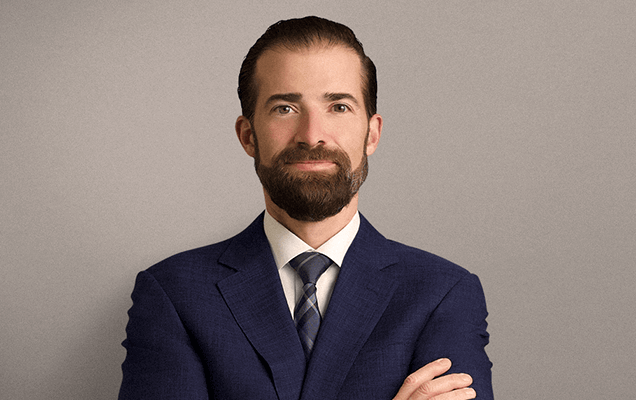Learning about your upcoming surgery is a great way to help alleviate some of the stress you might be feeling during this time. However, some of the terminologies can be confusing, particularly when the words sound very similar. One particular example is trying to understand the differences between craniotomy vs. craniectomy vs. cranioplasty. The following information will explain the differences between each, including the actual procedures, risks and benefits of each and what to expect during the recovery period.
The Procedures
The first step in understanding the differences between craniotomy, craniectomy and cranioplasty is to learn about the actual procedures. Each involves the skull (cranium) but the methods and treatment goals are unique.
Craniotomy
During a craniotomy, the neurosurgeon removes a small section of skull to provide access to the area of interest. Before the surgery is over, the bone is replaced and secure with titanium plates and screws. A craniotomy is typically performed as part of another procedure, providing a temporary window through the skull. Craniotomies are common as part of surgeries to treat brain tumors, vascular malformations and many other conditions of the brain where access is needed.
Craniectomy
A craniectomy is similar to a craniotomy, but the primary difference is the bone is not immediately replaced. A craniectomy is typically needed in an emergency situation, such as a traumatic brain injury, where a section of the skull is removed to relieve pressure. In these situations, a second surgery (cranioplasty) typically occurs once the swelling is gone. However, a craniectomy may also be necessary if there is a tumor within the bone itself. When this occurs, the cranioplasty occurs during the same surgery as the craniectomy.
Cranioplasty
While craniotomy and cranioplasty involve removing bone, cranioplasty involves replacing it. If the bone has been removed during a craniectomy, the same piece may be preserved and replaced at a later time. However, if the bone has been damaged due to trauma or has cancer cells present, synthetic materials can also be used. Options include titanium, acrylic or synthetic bone substitute. Modern 3-D printing technologies are also used to create replacements that are a perfect fit.
Risks and Benefits
Your personal doctor will discuss the risks and benefits of your specific procedure as they relate to your individual case. However, understanding the general risks and benefits of craniotomy vs. craniectomy vs. cranioplasty can help you during that conversation.
Craniotomy
The primary benefit of a craniotomy is that it allows your neurosurgeon immediate access to the area within the skull requiring treatment. The bone is replaced at the end of the procedure, so no second surgery is required and no synthetic materials are used.
The risks of a craniotomy are both general surgical risks and risks specific to the procedure itself. Overall risks, which are shared amongst craniotomy & craniectomy & cranioplasty, include the following.
- Reaction to anesthesia
- Infection
- Bleeding
- Blood clots
Craniotomy-specific risks include the following.
- Swelling of the brain
- Stroke
- Damage to the brain or nerves
- Cerebrospinal fluid (CSF) leak (treatable with medication or a second procedure)
- Impaired brain function
Craniectomy
The immediate benefit of a craniectomy is the relief of pressure in an emergency situation. When a craniectomy is performed, it is often to preserve life, brain function or both. Similarly, if a craniectomy is performed to remove a section of skull containing a tumor, this can prevent the further growth and/or spread of cancer cells.
A craniectomy also carries general surgical risks listed above, including infection, bleeding, blood clots and reactions to anesthesia. However, risks specifically related to craniectomy include the following.
- Swelling of the brain
- Damage to the brain or nerves
- Infection of the brain and/or spinal cord
- Subdural hematoma
- Abscess of the brain
- Impaired brain function
Cranioplasty
A cranioplasty is used to repair a defect of the skull following surgery or trauma. By replacing the missing bone, the brain will be protected once again. Cranioplasty can also improve esthetics by restoring the contour of the skull, and some patients experience improved neurological function following cranioplasty.
Again, cranioplasty carries general surgical risks. These include reactions to anesthesia, bleeding, blood clots and infection. However, there are also risks particular to cranioplasty, which includes the following.
- Swelling of the brain
- Seizures
- Abscess of the brain
- Subdural hematoma
- Impaired brain function
We are more than surgeons, we are your support system.
Recovery
Because craniotomies, craniectomies and cranioplasties are performed for a number of different reasons, your recovery is going to vary from the next person’s. Generally speaking, most patients spend a few days to a week in the hospital following a major procedure that involves a craniotomy, craniectomy or cranioplasty, but this can vary greatly. Likewise, many people will spend 6-8 weeks on activity restrictions after surgery, but your recovery may be longer if there was an incident such as trauma or stroke. Your personal doctor will be the best person to discuss what you can expect during your individual recovery period.
Your Individual Procedure
Now that the differences between craniotomy vs. craniectomy vs. cranioplasty are a little clearer, you can continue the conversation with your personal doctor about your treatment plan and what to expect during your recovery. Remember:
- A craniotomy is the temporary removal of bone during another procedure. The bone is replaced before the surgery is complete.
- A craniectomy is the removal of bone, commonly in an emergency situation. The bone is not immediately replaced.
- A cranioplasty is the replacement of bone. Your surgeon may use your own bone or other material, such as titanium, synthetic bone or acrylic.
As you continue to move forward along your treatment path, continue to learn about your condition and procedure. Educating yourself and maintaining open communication with your doctor will help you have peace of mind before, during and after your surgery.

About Dr. Anthony D'Ambrosio
Dr. Anthony D'Ambrosio is an accomplished neurosurgeon in North Jersey and a proud member of Neurosurgeons of New Jersey practicing primarily out of their Ridgewood office conveniently located on East Ridgewood Avenue. Dr. D’Ambrosio focuses his clinical practice on brain tumors, nervous system disorders, and facial pain disorders. He has expertise in a variety of complex surgical and radiosurgical techniques as well as minimally invasive procedures intended to successfully treat complex diseases of the brain. These techniques include micro-neurosurgery, microvascular decompression surgery and Gamma Knife radiosurgery. He's authored over 25 peer-reviewed journals and is the recipient of many awards.






